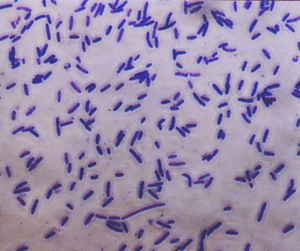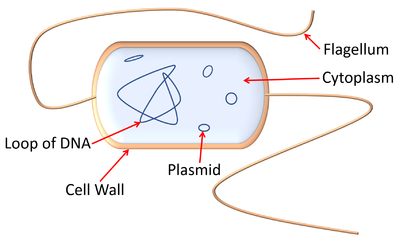Difference between revisions of "Bacteria"
| Line 11: | Line 11: | ||
: [[Bacteria]] can cause disease but some are important to keep us healthy. | : [[Bacteria]] can cause disease but some are important to keep us healthy. | ||
: Some [[bacteria]] have a tail called a [[flagellum]]. | : Some [[bacteria]] have a tail called a [[flagellum]]. | ||
| + | : [[Bacteria]] do not have a nucleus. | ||
| + | : The DNA of [[bacteria]] is in a loop. There are also smaller loops of DNA called [[plasmid]]s. | ||
{| class="wikitable" | {| class="wikitable" | ||
Revision as of 20:06, 4 September 2018
Key Stage 3
Meaning

A magnified image of several bacteria.
Bacteria are unicellular microorganisms that have no nucleus, mitochondria or chloroplast but do have cytoplasm, a cell membrane and a cell wall.
About Bacteria
- Bacteria can cause disease but some are important to keep us healthy.
- Some bacteria have a tail called a flagellum.
- Bacteria do not have a nucleus.
- The DNA of bacteria is in a loop. There are also smaller loops of DNA called plasmids.
